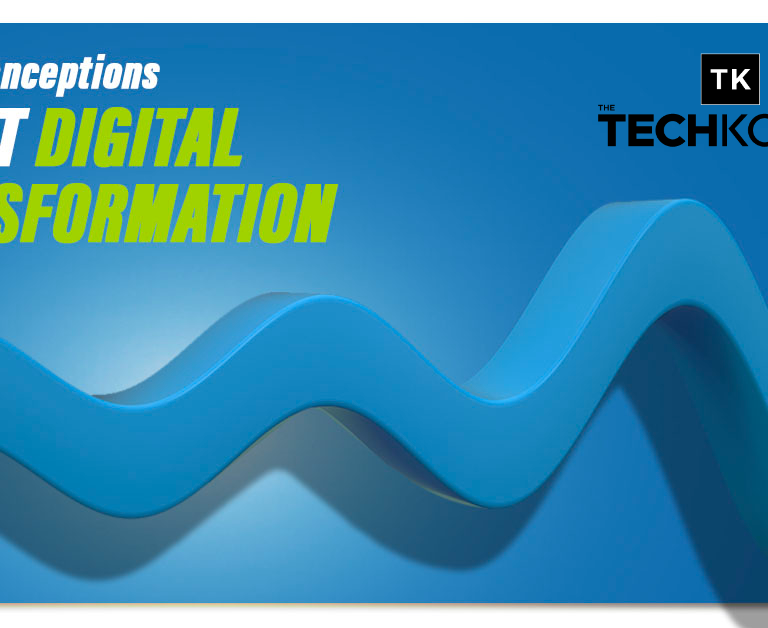Top Data Integration Tools in 2024
In the digital age, data is the lifeblood of any business. It fuels decision-making, drives innovation, and provides insights into customer behavior.
But managing this data can be a daunting task.
Enter data integration tools. These powerful software solutions streamline the process of combining data from different sources. They help businesses make sense of their data and use it to their advantage.
In 2024, the landscape of data integration tools is more diverse and sophisticated than ever. These tools are no longer just about merging data. They now offer features like real-time processing, cloud-based integration, and advanced security measures.
For IT Managers, understanding and implementing these tools can be a game-changer. They can help improve business operations and efficiency.
For Business Owners, leveraging these tools can drive growth. They can provide a competitive edge in an increasingly data-driven market.
And for Digital Transformation Consultants, these tools are key to helping clients navigate their digital journey. They can simplify complex technological concepts and make them more accessible.
But with so many options available, how do you choose the right tool for your needs?
This comprehensive guide will help you navigate the world of data integration tools in 2024. It will provide an in-depth overview of the top tools in the market, their features, benefits, and potential use cases.
Whether you’re an IT Manager looking to implement a new solution, a Business Owner seeking to leverage technology, or a Digital Transformation Consultant aiming to improve your service, this guide is for you.
So, let’s dive in and explore the top data integration tools in 2024. Your journey to better data management starts here.
Understanding Data Integration in 2024
Data integration involves consolidating data from disparate sources into a unified view. This process is crucial for modern businesses aiming for data-driven decision-making.
The primary goal of data integration is to ensure data consistency and quality. It helps organizations to access accurate and up-to-date information.
In 2024, data integration tools are more than just connectors. They incorporate advanced capabilities like data transformation, cleansing, and enrichment.
These enhancements enable businesses to derive actionable insights from their data. As a result, they can make more informed decisions and streamline operations.
The Evolution of Data Integration Tools
Data integration has come a long way from its early days. Initially, integration was manual and cumbersome, requiring extensive coding.
Over time, tools evolved to offer more automated solutions. They started incorporating ETL (Extract, Transform, Load) processes, making integration more efficient.
Today, cloud computing and big data technologies drive further evolution. Modern tools are capable of handling vast amounts of data with increased speed and accuracy.
Moreover, AI and machine learning have started to play a significant role. These technologies enhance data processing and offer predictive analytics capabilities.
The Importance of Data Integration for Modern Businesses
Data integration tools play a pivotal role in business operations. They enable organizations to access seamless and reliable data from different sources.
By using integrated data, businesses can improve their decision-making processes. It allows for a holistic view of operations, customer preferences, and market trends.
Furthermore, these tools support efforts to improve customer experiences. By integrating CRM data, companies can create personalized engagements.
In competitive markets, data integration provides businesses with a much-needed edge. It helps identify new opportunities, enhance operational efficiency, and reduce costs.
Key Features to Look for in Data Integration Tools
With a broad array of options, selecting the right tool can be daunting. When evaluating data integration solutions, certain features are essential.
Here’s a list of key features to consider:
- Scalability: Ensure the tool can grow with your business and handle increasing data volumes.
- Real-time processing: Look for capabilities that support instant data updates and interactions.
- Security: A robust tool should offer encryption and compliance support to safeguard data.
- Flexibility: The tool should adapt to different data sources and formats without extensive customization.
- Ease of use: User-friendly interfaces and intuitive design can significantly enhance productivity.
Other essential aspects include robust support, customizable workflows, and vendor reputation. Each feature plays a vital role in ensuring the tool’s effectiveness and alignment with business goals.
The Role of Cloud Computing in Data Integration
Cloud computing has revolutionized data integration, offering unparalleled flexibility and scalability. Traditional data integration solutions often required significant on-premise infrastructure and resources.
With cloud-based solutions, businesses enjoy reduced capital expenditures, with resources available on demand. This shift allows companies to scale their integration efforts rapidly to match their data needs.
Moreover, cloud-based integration solutions offer enhanced collaboration. Businesses can synchronize data across global operations seamlessly, improving data accessibility and decision-making.
Additionally, cloud platforms provide robust security measures. They ensure data is protected from breaches and unauthorized access, vital in today’s privacy-focused world.
On-Premise vs. Cloud-Based Data Integration Solutions
Choosing between on-premise and cloud-based solutions depends on several factors. Businesses must weigh the pros and cons according to their specific requirements.
On-premise solutions often imply high upfront costs for hardware and software. They also require in-house IT teams for maintenance and updates.
In contrast, cloud-based solutions are subscription-based, with reduced initial investment. They offer scalability, allowing businesses to adjust resources based on their needs.
Here’s a comparative list to consider:
- Cost: On-premise requires higher initial costs; cloud-based offers a pay-as-you-go model.
- Scalability: On-premise is limited to existing hardware; cloud-based can scale resources quickly.
- Maintenance: On-premise needs internal support; cloud providers manage updates and repairs.
- Accessibility: On-premise might restrict access to local networks; cloud enables access from anywhere with internet.
Choosing the right model involves analyzing security needs, data volume, and budget. Some businesses might opt for hybrid models, combining the strengths of both on-premise and cloud solutions.
Real-Time Data Processing Capabilities
In today’s fast-paced business environment, real-time data processing has become essential. It provides immediate insights and supports prompt decision-making.
Real-time data integration involves seamlessly updating data as changes occur. This capability is crucial for applications needing instant responses, like customer service and stock trading.
Cloud-based solutions often come equipped with powerful real-time processing capabilities. They leverage robust infrastructure that traditional setups might not match.
Such solutions support scenarios like fraud detection and IoT applications. They process streams of data with minimal latency, providing businesses with timely, accurate information.
With real-time data integration, businesses can react swiftly to changing conditions. It empowers them to stay competitive, improve operational efficiency, and enhance customer satisfaction.
Security and Compliance in Data Integration
Security and compliance are critical aspects of data integration. Protecting sensitive data from threats is a top priority for businesses.
Data integration tools must offer robust security features to safeguard information. Encryption, access controls, and monitoring are essential features to consider.
Moreover, compliance with industry regulations is non-negotiable. Businesses must ensure their data practices align with laws such as GDPR and HIPAA.
Neglecting security and compliance can lead to severe consequences. These include data breaches, financial penalties, and reputation damage.
Here’s a checklist to consider when evaluating data integration tools:
- Encryption: Ensure both data at rest and in transit are encrypted.
- Access Controls: Implement role-based access controls to manage who can view or modify data.
- Auditing: Ensure the tool provides audit logs for tracking data access and changes.
- Compliance: Verify that the solution meets relevant regulatory requirements specific to your industry.
Security Considerations for Data Integration Tools
When selecting data integration tools, security features should be a top priority. Encrypted data transmission is crucial in preventing unauthorized access during transfers.
Access control mechanisms further enhance security. Role-based access ensures only authorized personnel can interact with specific data sets.
Another vital component is audit logging. This feature tracks all data interactions, providing a trail that is invaluable for investigations or compliance checks.
Security requires an ongoing commitment. Regular updates and patches are essential to counteract evolving threats and vulnerabilities.
Finally, consider the vendor’s reputation and track record in security. Choosing a trusted provider can make a significant difference in data protection.
Compliance and Regulatory Factors in Data Integration
Adhering to compliance and regulatory factors is essential in data integration. Different industries have unique laws governing data handling and privacy.
GDPR, HIPAA, and PCI-DSS are some major regulations impacting data integration. Each sets stringent requirements on data collection, storage, and sharing.
Selecting a data integration tool requires verifying its compliance support. The tool should help with maintaining audit trails and data lineage.
Non-compliance can result in hefty fines and legal actions. Businesses must stay informed about changes in regulations to remain compliant.
Implementing data integration responsibly involves understanding and applying relevant legal frameworks. By doing so, businesses protect both themselves and their customers.
Leveraging AI and Automation in Data Integration
In 2024, AI and automation are transforming data integration. Advanced tools employ AI to enhance data processing and analysis efficiency.
Machine learning algorithms can predict data patterns. This allows businesses to optimize their integration strategies, leading to better decision-making.
Automation reduces manual tasks, improving accuracy and speed in data handling. It empowers organizations to focus on insights rather than data logistics.
The combination of AI and automation enables smarter data workflows. Automated processes ensure data consistency and integrity across platforms.
Here are key ways AI and automation enhance data integration:
- Predictive Analysis: AI anticipates data trends to inform strategic decisions.
- Error Reduction: Automated checks decrease human error in data processing.
- Efficiency Boost: Automation accelerates time-consuming data operations.
- Scalability: AI-driven tools adapt as data volumes grow, ensuring seamless integration.
- Resource Optimization: Automation frees up IT resources for strategic endeavors.
The Impact of AI and Machine Learning
AI and machine learning have reshaped data integration landscapes. These technologies offer unparalleled insights from vast datasets.
By analyzing complex datasets, AI identifies trends and anomalies that might go unnoticed. This capability enhances strategic planning and operational efficiency.
Machine learning models continuously improve by learning from new data inputs. They adapt to changing data landscapes, ensuring relevance in analysis.
AI also enhances data governance through intelligent monitoring. It flags irregularities, supporting compliance and minimizing risks associated with data breaches.
The predictive capabilities of AI and machine learning mean businesses can anticipate market changes. By doing so, they maintain a competitive edge through proactive adaptations.
Benefits of Automated Data Integration Processes
Automation in data integration streamlines operations, reducing human intervention. This results in fewer errors and more reliable data handling.
With automated processes, businesses achieve faster data delivery. Data can be processed and made available in real-time, supporting immediate business needs.
Consistency is another benefit; automation ensures data uniformity across different systems. This is crucial for businesses that depend on integrated data sources.
Automation also enhances resource allocation. IT teams can direct their focus on innovation rather than routine data tasks.
Finally, cost efficiency is a significant advantage. Reduced manual labor and improved accuracy translate to financial savings, making automation an attractive proposition for companies of all sizes.
Top Data Integration Tools of 2024
In 2024, the landscape of data integration tools is more dynamic than ever. Businesses seek tools that enhance efficiency, scalability, and reliability.
Each tool offers distinct features and benefits. Selection depends on the specific needs of a company’s IT infrastructure.
Evaluating integration tools involves examining their compatibility, ease of use, and support options. Here, we explore ten standout tools that are making waves this year.
These tools facilitate seamless data processing and ensure that data strategies align with business objectives.
Tool 1: Informatica PowerCenter
Informatica PowerCenter is renowned for its robust performance in data integration. It’s a versatile tool capable of handling large volumes of data efficiently.
Key features include a user-friendly interface and comprehensive support for varied data sources. Informatica excels in real-time data processing.
- User-Friendly Interface: Simplifies data integration tasks.
- Scalability: Handles growing data volumes effortlessly.
- Support for Multiple Sources: Integrates diverse data types.
- Robust Performance: Efficient in large-scale environments.
- Real-Time Processing: Enables quick data updates and access.
Tool 2: Talend Open Studio
Talend Open Studio is an open-source tool that offers flexibility and powerful integration capabilities. It supports a wide range of data environments.
Developers appreciate its ease of use and comprehensive community support. Talend is especially effective for cloud-based integrations.
- Open Source: Cost-effective integration solution.
- Cloud-Ready: Facilitates seamless cloud integrations.
- Extensive Support: Strong community and vendor resources.
- Ease of Use: Intuitive design enhances user experience.
- Wide Range of Connectors: Ensures compatibility across systems.
Tool 3: MuleSoft Anypoint Platform
MuleSoft Anypoint Platform stands out for its API-led connectivity approach. It provides robust tools for building, deploying, and managing APIs.
This tool streamlines the integration of applications, data, and devices. MuleSoft ensures comprehensive monitoring and scalability for enterprise needs.
- API-Led Connectivity: Focuses on efficient API management.
- Comprehensive Monitoring: Enhances operational insights.
- Scalable Solution: Adapts to enterprise-scale requirements.
- Connectivity: Links diverse applications and services.
- Robust Management Tools: Streamlines deployment and maintenance.
Tool 4: Microsoft Azure Data Factory
Microsoft Azure Data Factory offers cloud-based data integration services. It’s built to construct data-driven workflows, emphasizing streamlined ETL processes.
Azure Data Factory supports seamless movement and transformation of data. Its cloud-based nature ensures flexibility and scalability.
- Cloud-Based Service: Provides flexible, scalable solutions.
- Robust ETL Capabilities: Facilitates data transformation.
- High Compatibility: Integrates with various data sources.
- Efficient Data Movement: Ensures fast, secure transfers.
- Workflow Automation: Simplifies complex operations.
Tool 5: IBM InfoSphere DataStage
IBM InfoSphere DataStage is a powerful integration tool known for enterprise use. It facilitates high-volume data processing with ease.
This platform is built for ETL processes, ensuring data is organized and accessible. InfoSphere is ideal for complex, large-scale data environments.
- Enterprise-Grade Tool: Suitable for high-volume processing.
- ETL Focused: Enhances data transformation and transport.
- Highly Scalable: Grows with business data needs.
- Data Organization: Ensures structured data flow.
- Robust Support: Backed by comprehensive IBM resources.
Tool 6: Oracle Data Integrator
Oracle Data Integrator (ODI) offers high-performance data integration solutions. It’s designed to support real-time ETL that meets stringent business needs.
ODI’s real-time capabilities allow businesses to maintain up-to-date data. Its flexibility makes it apt for diverse, evolving data landscapes.
- Real-Time ETL: Keeps data current and relevant.
- High Performance: Efficiently processes vast datasets.
- Flexibility: Adapts to changing business demands.
- Comprehensive Integrations: Works well across varied platforms.
- Scalable Solution: Suitable for enterprises of all sizes.
Tool 7: SnapLogic
SnapLogic is a cloud-based integration tool known for its ease of use and scalability. It supports rapid data and application integrations.
SnapLogic’s visual designer interface simplifies complex integration tasks, making it accessible for non-technical users.
- Cloud-Based Solution: Ensures flexibility and scalability.
- User-Friendly Interface: Simplifies complex integrations.
- Rapid Processing: Speeds up data integration workflows.
- Robust Connector Library: Offers wide-ranging compatibility.
- Scalability: Grows seamlessly with user demands.
Tool 8: Dell Boomi
Dell Boomi is an integration platform as a service (iPaaS) solution. It focuses on smooth cloud integration and application connectivity.
Known for its low-code environment, Boomi empowers users to build integrations quickly. It’s particularly suited for accelerating digital transformation.
- iPaaS Solution: Facilitates cloud and application connectivity.
- Low-Code Platform: Speeds up development process.
- Digital Transformation: Aids rapid business evolution.
- Efficient Integration: Manages complex workflows effortlessly.
- Comprehensive Tools: Wide range of integration capabilities.
Tool 9: Apache NiFi
Apache NiFi is an open-source data integration tool designed for real-time data flows. It’s particularly effective at automating data movement.
NiFi is famed for its simple yet powerful interface. It manages data streams efficiently, making it suitable for IoT applications.
- Open-Source Tool: Cost-effective and flexible integration.
- Real-Time Data Flows: Supports immediate data movement.
- User-Friendly Interface: Simplifies data stream management.
- IoT Compatibility: Ideal for Internet of Things data.
- Automation Features: Enhances data process efficiency.
Tool 10: Fivetran
Fivetran automates data integration with a focus on removing data silos. It offers fully managed connectors requiring little configuration.
Fivetran’s automatic updates ensure users always have access to the latest data. It’s a smart choice for businesses prioritizing seamless data access.
- Automated Integration: Minimizes manual input and oversight.
- Fully Managed Connectors: Reduces setup complexity.
- Automatic Updates: Ensures access to the latest data.
- Data Silo Elimination: Promotes unified data ecosystems.
- Efficient Syncing: Maintains data fidelity across platforms.
Implementing Data Integration Tools: A Step-by-Step Guide
Implementing data integration tools effectively is crucial for maximizing their benefits. It involves understanding your business needs and selecting the right tools.
A structured approach helps ensure a seamless integration process. Key steps involve assessing needs, planning, training, and continuous evaluation.
To begin, it’s vital to identify the data challenges your organization faces. Knowing these challenges guides tool selection and implementation.
Successful implementation involves close collaboration between IT teams and business units. This cooperation helps align integration goals with business objectives.
Assessing Your Business’s Data Integration Needs
Start by evaluating your current data environment. Understand the data types and sources you manage.
Examine any existing data challenges or inefficiencies. Identify where improvements can streamline operations and enhance decision-making.
Consider the scale and growth potential of your organization. Choose tools that match your current needs yet can scale with future demands.
Engage stakeholders to gain insight into specific departmental data requirements. Their input helps tailor integration strategies to real-world use cases.
Steps for Successful Implementation
Once needs are assessed, it’s time to plan the integration process. Start by defining clear, achievable goals for your data integration project.
Choose an integration tool that aligns with your goals and existing infrastructure. Ensure compatibility with current systems and data formats.
Next, map out the integration workflow. Define the data flow and determine how data moves between systems.
Test integrations in phases to identify potential issues early. This step-by-step approach allows for adjustments and optimizations.
Training and Support for Data Integration Tools
Effective training ensures users can leverage integration tools fully. Provide comprehensive training programs tailored to different user groups.
Consider vendor or third-party training options if in-house expertise is limited. They offer valuable insights into tool capabilities.
Support doesn’t end post-deployment. Continuously provide resources and updates to staff as integration needs evolve.
Establish a support system for troubleshooting and user queries. Accessible support enhances user confidence and tool effectiveness.
The Future of Data Integration: Trends and Predictions
The landscape of data integration is rapidly changing, driven by technological advancements and evolving business needs. As we look to the future, several trends are shaping this field.
A notable trend is the increased focus on real-time data integration. As businesses demand immediate insights, tools that provide instant data integration are rising in prominence.
Artificial intelligence and machine learning are enhancing data integration capabilities. These technologies help automate processes and offer predictive analytics, improving decision-making.
Cloud-based solutions continue to dominate the integration space. Organizations prefer these for their scalability and cost-effectiveness, moving away from on-premise setups.
Additionally, the integration of IoT (Internet of Things) data is becoming vital. As IoT devices proliferate, seamless integration of their data is essential for comprehensive analytics.
Emerging Technologies and Their Impact on Data Integration
Blockchain technology is beginning to influence data integration. Its potential to offer secure, verifiable data transactions could transform how data is shared across platforms.
Edge computing is another impactful technology. By processing data closer to its source, it reduces latency and enhances real-time analytics capabilities.
Advancements in natural language processing (NLP) are easing the interaction with data integration tools. NLP allows for more intuitive tool interfaces, enabling easier use by non-technical staff.
Moreover, augmented reality (AR) and virtual reality (VR) are entering the data integration domain. Their visualization capabilities can change how we interact with and interpret data.
Expert Opinions and Industry Insights
Experts predict increased emphasis on data security and privacy in integration processes. As data volumes grow, safeguarding sensitive information remains a priority.
Industry leaders also foresee a surge in the use of hybrid integration platforms. These platforms combine on-premise, cloud, and IoT environments for a comprehensive integration strategy.
There’s consensus on the importance of scalability in integration solutions. As businesses expand, their data needs grow, requiring flexible tools that can scale accordingly.
Finally, experts stress the value of user-centric design in integration tools. Ensuring tools are intuitive to operate can significantly reduce implementation time and training costs.
Conclusion
As we move into 2024, the landscape of data integration continues to evolve, offering vast opportunities for businesses to harness their data’s full potential. Selecting the right tools for data integration is crucial in navigating this ever-changing field.
The tools reviewed in this article represent the forefront of data integration innovation. They offer solutions tailored to modern business needs, including real-time processing, scalability, and enhanced security.
By understanding these trends and features, IT managers, business owners, and consultants can make informed decisions. Implementing the right data integration software can significantly improve business operations, drive growth, and provide a competitive edge.
Investing in the right data management tools ensures that organizations can effectively navigate the complexities of integrating data across platforms. As the future unfolds, staying informed and adaptable will be key to success in the dynamic world of data integration.





